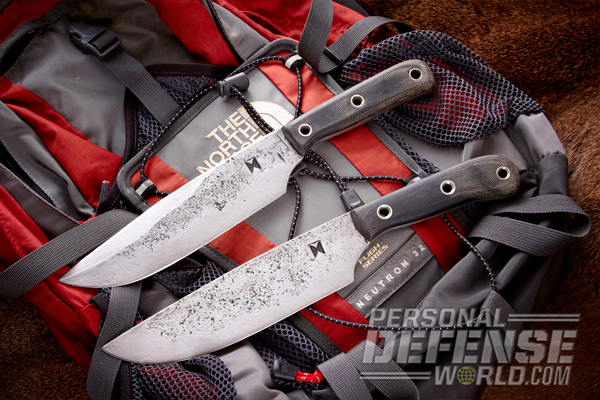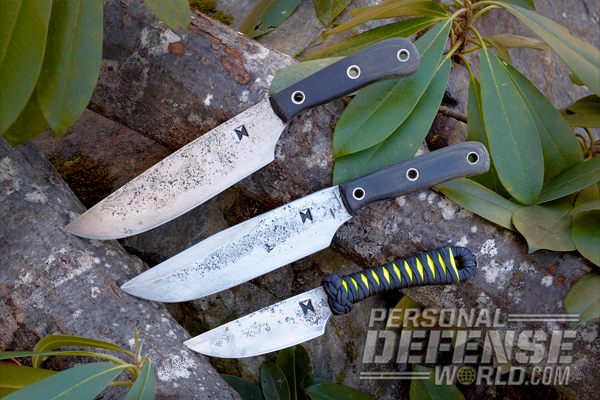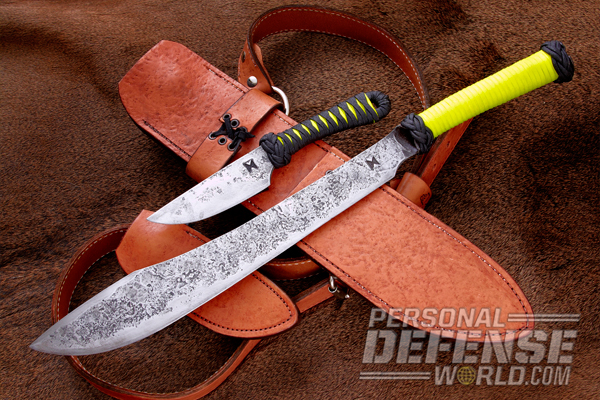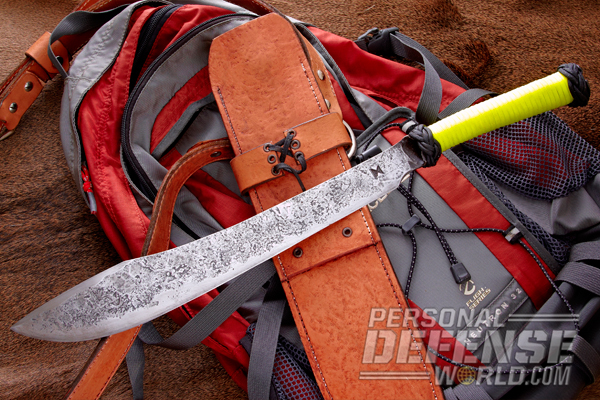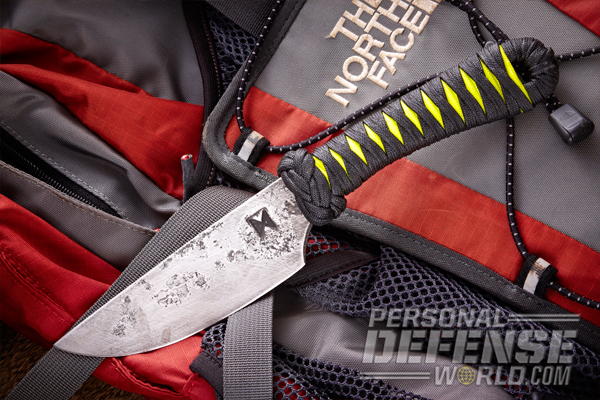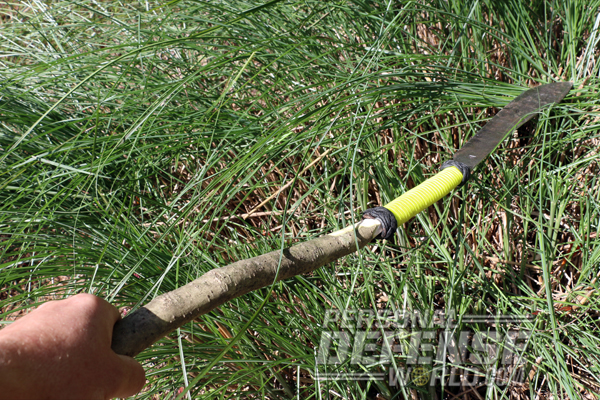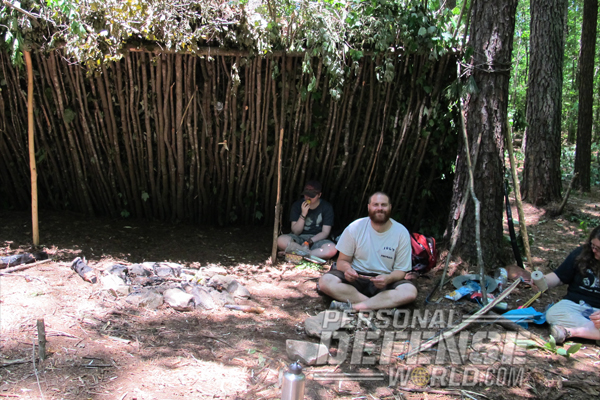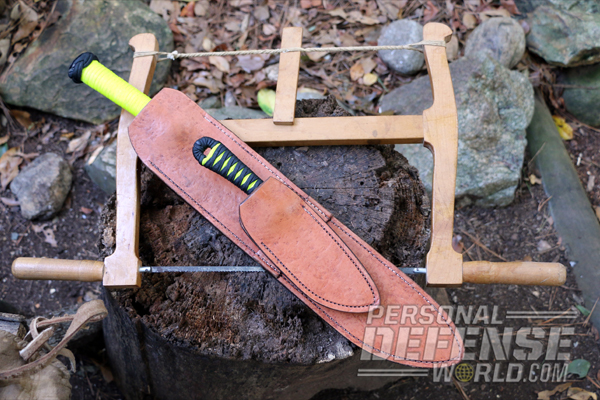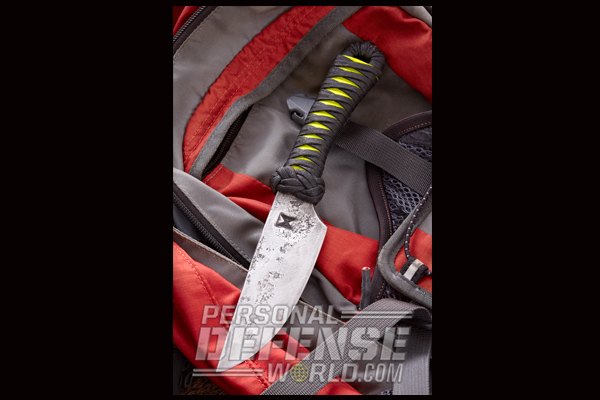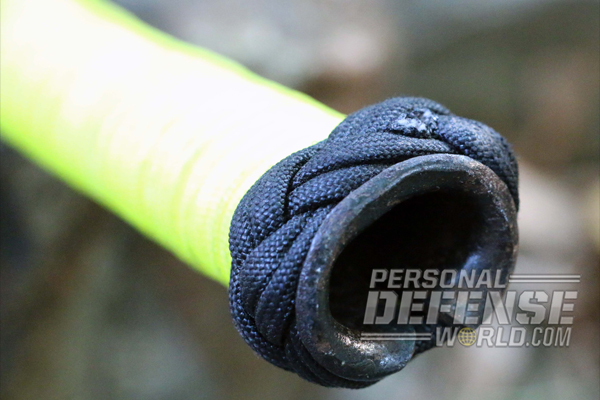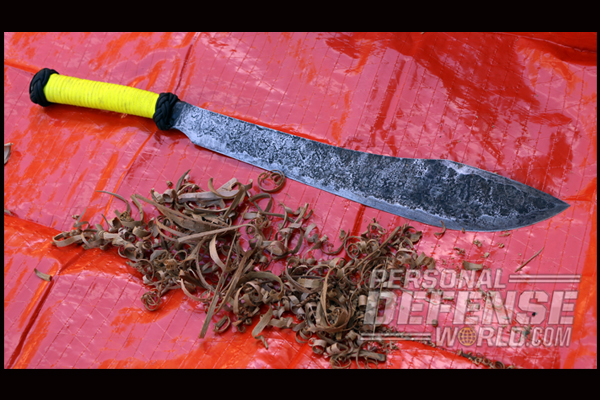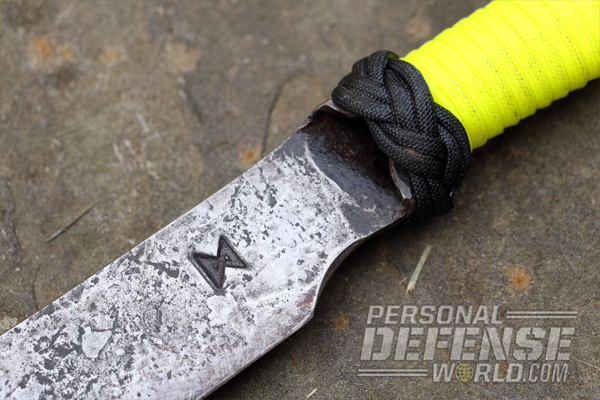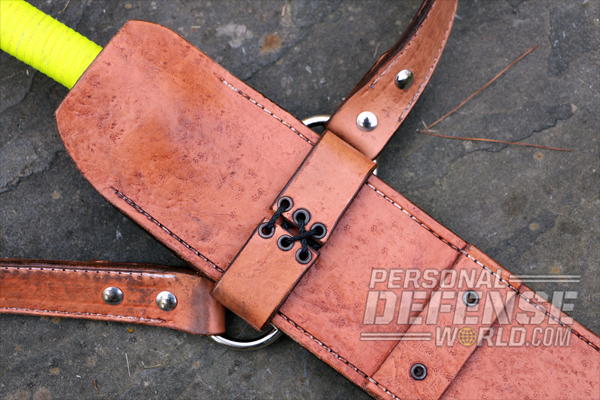After growing up on the farm in Texas, James Helm knows what goes into a hard day’s work. At only 31 years old, he has pounded out blades since he was 16. For James, the transition from farmer to bladesmith did not happen overnight. He studied as an English and education major while working part time as a blacksmith in college. He also learned a lot from such famous bladesmiths as Tim Lively and Tai Goo. After college, James opened up Helm Forge to make blades full time. Knives, machetes, and even axes and swords are all offered by James. There is even a Helm Forge cleaver for cutting coconuts and wood. His knives have traveled all over the world, including Afghanistan, Bahrain, Canada, Okinawa and Russia. The U.S. Army, Air Force, Marines, FBI and the Navy SEALs all use his blades. So what is it about Helm Forge’s knives that makes them so indestructible?
“It went through the soft portions of the shell like butter and cleaved the meat to make a stew very easily. It even cleaned up as good as new with a little soap.”
METALLURGY LESSON:
Why is a metal so tough when you pound on it? Without writing a book on the subject, James summarizes: “What forging creates is a chance to refine the grain of the steel more. If you make a blade from a bar stock (stock removal), there may be a chance the grain isn’t as small as you can get it. When working with steel in a forge, you go about thermally cycling it and shrinking the grain down. Also, the pounding helps shrink the grain as well.” James wraps it up by saying, “Everything else being equal, the blade that has the finer grain is going to be tougher, regardless if it was forged or made using stock removal.” That barely brushes the surface of the argument, James humbly admits, but it does make a good reason of why so many swords up until the 20th century were made using forges. Helm Forge triple normalizes the grain, and forges the blades out of ultra-tough 5160 spring steel, to make sure the blades can take a beating.
Advertisement — Continue Reading Below
While there are a plethora of combat machetes, utilitarian swords and other hybrids out in the world, there is nothing like the Helm Bush Sword. To start off, most military-style blades are clunky and unwieldy, weighing in over a pound. The Bush Sword is light, weighing only 14 ounces, which makes it thin. This is probably what one would want in a situation where it would be carried and used regularly. Today’s adversary normally has a Kevlar vest and a helmet on, and a stabbing motion, rather than a slashing attack, would be better. The Bush Sword can do both very well, and in the remote chance that one is engaged in a hand-to-hand skirmish, it is good to know the Bush Sword is there.
SOCKET HANDLE:
While learning about forging, James had the chance to work with Tai Goo. Tai is a well-respected knifemaker who some may know from the late Ron Hood’s awesome Primitive Knifemaking DVD. While working with Tai, James learned how to forge the socket handle. This consists of a hollow handle that is part of the blade. The 6-inch, hollow handle lends itself to stashing survival goodies inside, and also gives the option of affixing the blade to a stick. There are two things that can be said about the Bush Sword on the end of a stick—more speed and more reach. Attached to an angled stick, the Bush Sword can be used to mow places with low, straight shrubbery so the user doesn’t have to bend down. When attached to a straight stick, the reach can be lengthened like a brush axe. The Bush Sword’s hollow handle is an oval shape, a style found in the South Pacific, and is more ergonomic for long-term use. The handle is wrapped with paracord, which is impregnated with epoxy so it does not come loose easily. The butt end of the handle is hammered out into a funnel, making it easier to fill with items.
For larger tools, smaller more compact sheaths are preferred. Many companies make large, bulky sheaths for knives and machetes that complicate a simple tool. James collaborated with Luke Swenson, a gifted Texas knifemaker, to come up with a sheath system that was not only compact, but beautiful as well. The sheath can be slid inside a backpack, between the seats in a car, or anywhere where a long crevice is available. The sheath sits in a frog sleeve, a hoop of leather that slides over a sheath and can be tightened. The sheath is held tightly in this configuration; the frog sleeves often come with a belt loop as well. Luke first tightened it with paracord, but that cord is slick so it was replaced with tarred nylon twine to give it a bite. The system also comes with a handcrafted sling to be used baldric style. Bands of leather go horizontally down the sheath, too, for lashing purposes, but do not crowd the sheath, making for a very beautiful but functional work of art.
Advertisement — Continue Reading Below
FIELD TEST:
A smaller knife, forged out of a single piece of 5160 steel, piggybacks on this particular machete as an option. The 0.1875-inch-thick knife is handy to have on the belt or on the machete sheath. This knife has a Japanese-style handle wrap with paracord that makes it ergonomic; the blade features a flat grind and a thin secondary bevel. The knife was put to the test processing a snapping turtle that was hit on the road. It went through the soft portions of the shell like butter and cleaved the meat to make a stew very easily. It even cleaned up as good as new with a little soap. The paracord handle on it is also treated to keep it from moving around, and though it is a relatively thick knife, it only weighs in at 6.3 ounces. In the Piedmont region of North Carolina, the Bush Sword was put to the test by numerous individuals during survival classes taught this summer.
The most interesting individual was a woman who studied medieval sword techniques and majored in medieval history. She noted that “the whippyness of this particular sword gives it optimum speed for cleaving through necks. ”While we weren’t able to test this, the Bush Sword did make a lean-to shelter large enough to accommodate eight adults. Over 50 saplings were cut down and processed by the sword without it needing so much as a tune-up on the edge. James likes to show pictures of a customer’s extremely large tree that a Bush Sword cut down—it’s a massive trunk that I wouldn’t want to tackle even with an axe! Helm Forge makes steel that shrugs off abuse, as shown through the long, arduous testing with the Bush Sword. Many blacksmith blade makers do not carry the cross-section of cutting tools that James creates, yet he still combines the tribal “look” with hardcore tactical weapons. Helm Forge would have been an asset in medieval times, but today, James outfits warriors and woods wanders alike with tools that will last a lifetime.
For more information visit:
Advertisement — Continue Reading Below
http://www.helmforge.com or call 210-209-1549
http://www.swensonknives.com or call 210-722-3227
